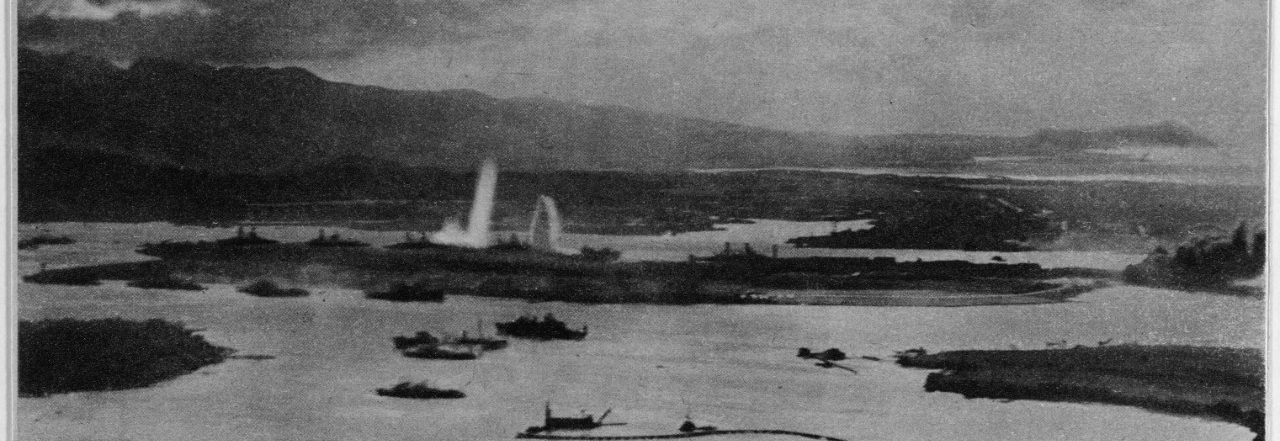
Overall Views of the Pearl Harbor Attack
When the first Japanese attack wave arrived over Pearl Harbor seven of their primary targets, the U.S. battleships, were moored along "Battleship Row", on the eastern side of Ford Island. Another battleship was in drydock in the nearby Navy Yard. Other moorings which the Japanese believed might include battleships, or the equally important aircraft carriers, were at the Navy Yard's 1010 Dock and along Ford Island's western side.
The Japanese initially hit airfields, including that on Ford Island. Dive bombers attacked there at about 7:55 AM, destroying many aircraft, among them PBY patrol planes at the island's southern tip. This attack prompted the dispatch of the famous message "Air raid, Pearl Harbor -- this is no drill", the outside World's first indication that war had come to the Pacific.
Within a few moments, torpedo planes attacked from east and west, with one of the latter torpedoing the USS Helena at 1010 dock. Others, from the same direction, hit USS Utah and USS Raleigh, off the western side of Ford Island.
The great majority of the torpedo planes came in from the east, flying up the waterway between Pearl Harbor Navy Yard and the Submarine Base to hit the ships on that side of Ford Island. They put two "fish" into USS California, at the southern end of the row. At the northern end, another struck USS Nevada. The outboard ships in the center of "Battleship Row", USS Oklahoma and West Virginia, each had their port sides torn open by many torpedoes.
As the torpedo planes were completing their work, horizontal bombers swept up "Battleship Row", dropping armor-piercing bombs. Several ships were hit. One received a death blow, as USS Arizona blew up with a tremendous explosion.
Planes of the second attack wave revisited some of the ships already hit, and also spread destruction in the Navy Yard, where they bombed the drydocked battleship Pennsylvania and three destroyers. Other dive bombers went after the Nevada, which had left her berth and was trying to get to sea. Very heavy anti-aircraft gunfire greeted these aircraft, whose losses were significantly greater than those of the first attack wave.
The raiders had no opportunity to hit American aircraft carriers, all of which were at sea, and did not target fuel storage, most cruisers and destroyers, submarines and most maintenance facilities. However, in just under two hours they had wrecked the U.S. Pacific Fleet's battleship force, ensuring that it would not interfere with Japan's plans for conquest.


